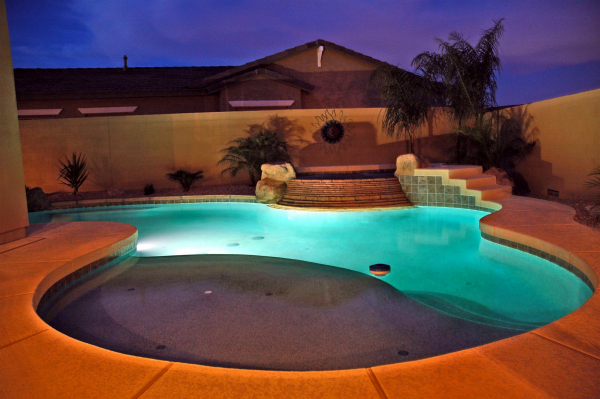What Kind of Insurance Do You Need for a Second Home?

We are specializing in providing specialized second home insurance to Minnesota, Wisconsin, Iowa, and Arizona.
Getting a sheltered cottage in the woods as a second home or a holiday home in sunny Arizona is lovely, but it can quickly turn to a terrible idea if you are not adequately prepared for proper second home insurance that comes along with it.
The big question is, does the insurance policy of your primary home covers your vacation home? Or you need a different type of homeowners insurance – Second Home Insurance? Many people think that their primary home insurance policy covers for their vacation home, this is a wrong notion, and the result can be disastrous.
If you are buying a condo or a secondary/vacation home you need to carefully scrutinize the insurance costs and the risks that come with them. There are many determinants involve in getting quotes and pricing for your secondary home0wners insurance.
According to the United States Census Bureau data from 2000, more than 3.6 million condos and homes are occasionally used in the U.S. As a matter of fact, that is about 3.1% of all houses in the country. However, Florida has the highest number of seasonal homes with a record of 484,825 while more than 10% of the condos and homes in Vermont, Maine and New Hampshire accordingly are also seasonal residences.
The Expenses Involved When Insuring Vacation or Secondary Homes
To secure a secondary residence, you need to purchase a second home insurance policy for the seasonal home. The price will be based on the same criteria as your primary residence. The deductible you select, the replacement cost value and all other applicable risks. However, the price for the secondary homeowners’ insurance will be more costly than if the same residence was your primary home.
The reason why secondary residence is more expensive is that the houses are unoccupied most of the time and it is common for claims to be filed.
Every insurer increases the cost of the premium differently, or the surcharge is different from another. For instance, it can to be between 10% to 20% increase. Let’s say the premium to cover a home is $2000 per year if the residence in question is a secondary home, and a 10% surcharge was applied, the premium would cost $2200 per year for the same coverage.
However, some insurance companies have different surcharges depending on the particular secondary residence assets. They differentiate the risks of secondary homes based on the following;
- If a full-time housekeeper lives in the home
- Is there a caretaker living on the grounds of the estate?
- Does the maintenance company check on the residence?
- If they insure your primary residence
The answers to the above questions will determine the surcharges.
How to reduce your Secondary Home Premium
The feeling of having a second home can be exhilarating, but it can easily simmer down because most times the luxury of a secondary residence comes with an equally higher price tag. Greg Ganyo Insurance Agency gives shows you how to save on the insurance premium.
How You Can Save On The Second Home Insurance Premium
The cost of improving a home most of the times overrides the amount you save on your premium. For example, you get a discount for residences with a central alarm system; nonetheless, the savings on your premium is lesser than the subscription charge for security systems. However, it does not imply that there is no value in installing a central alarm system most especially in a home that is uninhabited ample of the time. That would be a smart move against the threat of burglary.
Making a home more secure reduces the chance of something bad happening to it and mitigates the probability of the client needing to file a claim. This is why securing your residence is essential. Remaining claim-free is vital to keeping the cost of your second home insurance premium down.
Other Optional Insurance Coverage You Need To Consider For Your Secondary/Vacation Residence
In addition to the deductions your primary home would receive, a home insurance policy for your secondary residence usually qualifies you as policyholder for an accumulating discount.
There is other optional insurance packages that you need for your second home, For instance, flood and earthquake insurance although, it depends on the location of your residence. The flood and earthquake policies are, however, not covered by standard home insurance policies.
For someone who wants to buy a vacation home in California, earthquake insurance can be a smart defense to protect your investment or if you have a beach house on the east coast of Florida, having flood insurance needs to be put into consideration because an abnormal rise in tide from a hurricane may easily damage or flood the property.
The cost of insuring your home whether primary or secondary should be put into consideration before purchasing a residence because the price of either of the above insurance policies can be quite high. The average cost of earthquake coverage in California is $1.75 per $1,000 of coverage, excluding the monthly premium fee; it would cost $437 per month to cover a $250,000 home.
Secondary/Vacation Rental Insurance
Are you thinking of renting out your vacation home? Why not? It is an excellent way to offset the cost of having a holiday home. Although, you need to ensure you fully understand the insurance consequences before renting out your secondary home.
It all depends on the length of stays and the frequency, it is important you notify the insurer or subscribe to a separate landlord insurance policy.
If you rent your home for extended periods, especially to a single tenant, you need to consider commercial or landlord insurance. If you rent your home for a couple of weeks at a time all through the year, you need to inform your insurance company, and there will likely be a surcharge to the premium of the policy covering the home. However, if you rent out your home for a few weekends each year through rental service such as Airbnb you may not let your insurer know.
If you want to rent someone else’s vacation home for a short period, you might already have the insurance coverage you need through your current renters or home insurance policy. You can also check with your insurer to see if your plan includes “off-premises” coverage for the personal properties of the policyholder. There is a limit to the amount you can claim – usually 10% of the replacement cost value of the home the policy covers. If you bring possessions worth more than that amount, consider adding an endorsement to your policy before your trip.
With the help of Greg Ganyo Insurance Agency, you will be able to find out if you have adequate insurance coverage for your vacation or secondary home – Call US!
















